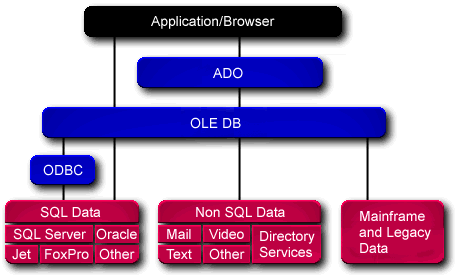ActiveX Data Objects
ActiveX Data Objects ( ADO) [ ˌ æktɪvɛks deɪtə ˌ ɑ ː bdʒɪkts ] is an ActiveX -based interface for data access to databases and tabular data sources such as Excel spreadsheets and CSV files.
Basic
ADO is the successor to DAO (Data Access Objects). With ADO, can not be addressed almost all popular databases such as Microsoft Access, SQL Server, Oracle or Informix.
The ADO data model consists of three main components:
Database access with ADO has over its predecessor (DAO ) to substantial improvements in execution speed. The reason lies with ADO is to use the ODBC interface. For the definition of the database access the OLE DB provider is required, which is part of the new feature of ADO. With the help of the provider may be reported to the Connection object to be accessed which database and which version it is there. The value is specified as a string. Example: " Microsoft.Jet.OLEDB.4.0 " for Access 2000.
With the introduction of. NET technology ADO to ADO.NET is what is to be considered despite the name, rather than a complete redesign for an evolution step. ADO.NET focuses on so-called Disconnected Scenarios in which the connection to the database is to be maintained only as short as possible. Under ADO A similar principle was possible with the Disconnected Recordsets.










